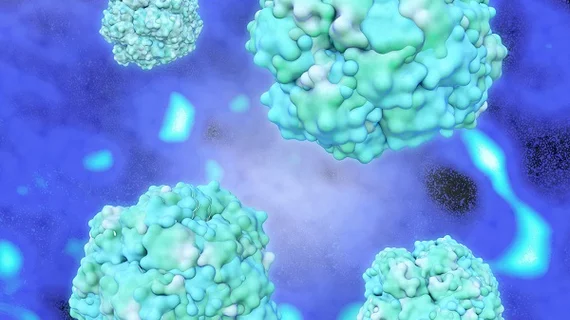18F-DCFPyL PSMA PET/CT imaging accurately localized biochemically recurrent prostate cancer and prompted clinicians to change their management plans in more than 80% of patients, according to a recent study in the Journal of Nuclear Medicine.
A change in treatment occurred in more than 60% of patients.
Prostate cancer accounts for one-third of male cancer deaths in Canada, but few imaging modalities can match the precise localization of cancer achievable through prostate specific antigen (PSA) testing. PET radiopharmaceuticals have shown promise in overcoming such limitations.
“18F-DCFPyL, a radiotracer based on the glutamate-ureido-lysine motif, has the advantage of the longer 110-minute half-life of 18F compared to 68Ga, and of ease of regional distribution; it has been used successfully for detection of PSMA-expressing prostate cancer lesions,” wrote first author Etienne Rousseau, the department of radiology, University of British Columbia, Vancouver, BC, Canada, and colleagues.
With that in mind, Rousseau et al. performed PET/CT imaging using 18F-DCFPyL in 130 patients with prostate cancer and biochemical recurrence following radical prostatectomy/ curative intent radiotherapy. Cancer localization and number of lesions were noted. Physicians responded to a pre- and post-test questionnaire to determine imaging’s impact on patient management.
Prostate cancer was localized in 60% (PSA greater than or equal to 0.4 to <0.5), 78% (greater than or equal to 0.5 to <1.0), 72% (greater than or equal to 1.0 to <2.0), and 92% (greater than or equal to 2.0) of cases. Twenty-two patients experienced mild adverse events after the scan.
Additionally, a majority of the cohort had one lesion (40.8%), followed by two (8.5%) and three (4.6%). Lesion number and total lesion uptake was significantly related to PSA, the researchers noted.
Rousseau and colleagues pointed out that 53.9% of patients had one to three lesions, which would fall under the current definition of oligometastatic disease in prostate cancer. Importantly, there are options available to treat localized or oligometastatic disease.
“In this setting, 18F-DCFPyL PET/CT may be useful to identify disease occult on other imaging modalities that could be amenable to more aggressive treatment,” the group added.
Referring physicians reported a change in treatment intent in 65.5% of patients and a change disease staging in an additional 65.5%, nearly all of whom were upstaged. Imaging results improved decision making in nearly 90% of patients, while management plans were altered in 87%.
“18F-DCFPyL PET/CT imaging identified sites of recurrent prostate cancer in the majority of subjects and was well tolerated, with no serious adverse events,” the authors wrote. “18F-DCFPyL PET/CT imaging improved decision making for referring oncologists and changed management plans for a majority of subjects.”

